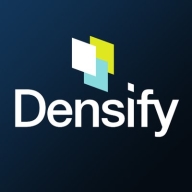

Densify and AWS Snowball operate within the cloud optimization and data transfer sectors, respectively. Densify tends to have the upper hand in resource management due to its cost optimization and dynamic allocation expertise, while AWS Snowball excels in secure data transfer.
Features: Densify focuses on predictive analytics to optimize cloud resources, offers integration with various platforms, and delivers smart resource scaling. AWS Snowball provides rapid and secure solutions for transferring large-scale data, incorporating advanced encryption and physical security measures, making it crucial for enterprises requiring high-volume data migration.
Room for Improvement: Densify could enhance its reporting capabilities and increase ease of use for new users. It might also benefit from expanding its AI functionalities for more precise predictions. AWS Snowball might improve by offering more flexible storage capacities and reducing deployment time. Enhancements in real-time tracking could also add value.
Ease of Deployment and Customer Service: AWS Snowball requires a hands-on deployment process as it involves shipping physical devices; however, it provides comprehensive online resources for assistance. Densify integrates seamlessly into existing environments due to its software-centric design, simplifying deployment. Densify focuses on cloud optimization support, whereas AWS Snowball's support is centered on data transfer facilitation.
Pricing and ROI: Densify's pricing reflects its capability to deliver ongoing financial savings through continuous cloud resource optimization, offering significant ROI by optimizing spending. AWS Snowball provides a cost-effective means for large data transfers in comparison to traditional network options, showing quick ROI from reduced migration time and expenses.
| Product | Market Share (%) |
|---|---|
| AWS Snowball | 1.3% |
| Densify | 3.1% |
| Other | 95.6% |


| Company Size | Count |
|---|---|
| Small Business | 4 |
| Midsize Enterprise | 1 |
| Large Enterprise | 6 |
| Company Size | Count |
|---|---|
| Small Business | 1 |
| Midsize Enterprise | 1 |
| Large Enterprise | 9 |
Snowball is a petabyte-scale data transport solution that uses devices designed to be secure to transfer large amounts of data into and out of the AWS Cloud. Using Snowball addresses common challenges with large-scale data transfers including high network costs, long transfer times, and security concerns. Customers today use Snowball to migrate analytics data, genomics data, video libraries, image repositories, backups, and to archive part of data center shutdowns, tape replacement or application migration projects. Transferring data with Snowball is simple, fast, more secure, and can be as little as one-fifth the cost of transferring data via high-speed Internet.
Densify is a hybrid cloud and container resource management platform that makes workloads self-aware of their precise resource requirements and automates the resource management and selection process. This solution helps you control your cloud spend and also helps your apps perform and scale better. Densify enables you to match your cloud requirements with the optimal cloud supply. Additionally, Densify is the only technology that leverages patented, predictive machine learning-powered analytics to perform advanced modeling of workload patterns, and provide precise optimization directives. It is ideal for cloud engineers, container platform owners, and IT finance.
Densify works by:
Densify Features
Densify has many valuable key features. Some of the most useful ones include:
Densify Benefits
There are many benefits to implementing Densify. Some of the biggest advantages the solution offers include:
We monitor all Cloud Migration reviews to prevent fraudulent reviews and keep review quality high. We do not post reviews by company employees or direct competitors. We validate each review for authenticity via cross-reference with LinkedIn, and personal follow-up with the reviewer when necessary.